Frantic Industrial Competition causes European Infighting and World War
National competition is part of life, but frantic competition, driven by intoxicating industrial power, now turned violent. In 1914, the European tribes trained their guns, not on unarmed natives but, on each other. Britain, France and Russia against Germany and Austria. The leaders may have expected a traditional war of cavalry and glitter. What they got was unprecedented horror. An industrial war.
But at least it wasn’t yet a world war. America’s president Woodrow Wilson was determined to keep his country out of the fighting. But in 1917, Germany’s new Foreign Secretary was about to change America’s mind.
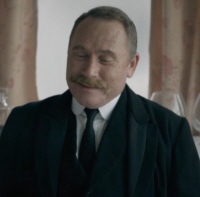
Arthur Zimmermann had risen fast through the foreign service to become the only non-aristocrat in the German cabinet. He was good-natured honest and loyal. He was also a firm believer in world war.
He’d helped fund Irish rebellion against Britain and he’d tried his hand at fomenting Islamic jihad in the Middle East. But his biggest tricks were still to come.
Zimmermann’s pen never stop scratching. His secretaries typewriter never stopped clacking. He had a finger in every pie.

The American ambassador in Berlin described him as “a very jolly, large sort of German”. Zimmermann dreamed of changing the world. And he would. Only not quite in the way he intended. Indeed, there is a case to be made that Arthur Zimmermann was one of the most destructive individuals of the 20th century.
Zimmermann’s opportunity to change the world came in January 1917, when the German military elite announced a new plan for victory. Unrestricted submarine warfare, to destroy all merchant shipping coming to Britain. They hoped this would starve the British into submission.
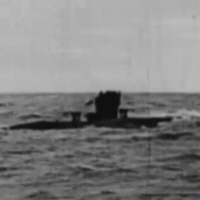
This was incredibly dangerous. Why? Because it meant sinking American ships and almost certainly bringing the United States into the war. And once Americans reached Europe, Germany couldn’t win. And yet the German high command decided it was a risk worth taking. And on February 1, 1917, they announced the start of unrestricted submarine warfare.
Arthur Zimmermann set about finding a way to distract America. He came up with quite a distraction. Zimmermann’s plan was to persuade Mexico to invade America with German help, seizing back Texas, New Mexico and Arizona. That would distract Washington, all right.

If Arthur pulled this off, he’d become a German national hero. Zimmermann drafted a telegram outlining his plan to the German ambassador in Mexico. He sent it on a secure line from Berlin.
Except that the line wasn’t quite as secure as Zimmermann thought. In room 40 at the Admiralty in London, British naval intelligence intercepted and decoded Zimmermann’s telegram. By 1 PM on 24 February, 1917, the contents of the telegram were being presented to the president of the United States.
President Woodrow Wilson, who’d fought so hard to keep America out of the war, rubbed his eyes in disbelief. Then he released the news, first to the American Congressmen and then to the press, and all hell broke loose.
Yet even then, many Americans simply didn’t believe it. It was incredible that the Germans were up to something like this. It must be a sneaky British plot to lure America into the war. And they weren’t that gullible, they weren’t going to fall for that.
Re-enter Arthur Zimmermann.
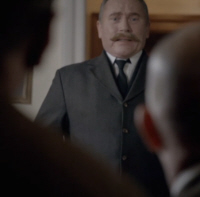
Zimmermann was invited to deny the story about his telegram. But Arthur couldn’t tell a lie. Oh, yes, he said, it was all true. Well done, Zimmermann(!)
His surprise confession finally drove America to declare war on Germany. This was now undoubtedly a world war. But Zimmermann didn’t stop plotting.
He now turned his attention to Germany’s enemy in the East, Russia. How could he undermine them? Zimmermann’s opportunity came in February 1917, when the desperate, downtrodden people of Russia finally revolted against the Tsar.
Zimmermann wanted to pour oil on the fire. He needed an anti-war Russian extremist to seize power and withdraw Russia from the war. Zimmermann’s agents knew of just such a man. He was living quietly and modestly in exile, amid writers and artists, in Zurich in Switzerland.
Zimmermann’s plan, what he called his revolutionising plan, made using this man to undermine Russia’s will to fight. His name was Vladimir Ilyich Ulyanov. We know him better as Lenin.
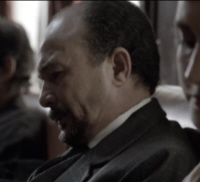
In 1917, Lenin was leader of the Bolsheviks, a revolutionary communist faction who wanted Russia out of the war. Lenin was described variously as being like a plague of bacillus or poison gas.
He was so desperate to get back to Russia and try to seize power that he took the German money and the German offer. If he succeeded, he’d sue for peace. And so Zimmermann organised a sealed train to take Lenin and the rest of the Bolsheviks right the way across Germany to Petrograd in Russia. It was like a syringe full of poison being squirted halfway across the continent.
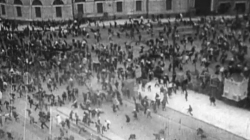
In October 1917, Lenin led a successful Bolshevik revolution. In just eight months, he had been transformed from a nobody in exile to a man on his way to leading 160 million people in the world’s first communist state.
This time, Zimmermann got exactly what he wanted. Soviet Russia withdrew from the First World War in March 1918. But by then, the Americans were helping the Allies to defeat Germany. When the war came to an end in November 1918, two new powers had been firmly established on the world stage. One capitalist… one Communist.
The modern world would be dominated not by empires, but by these two mass ideologies and the new superpowers wielding them.
So, one fairly ordinary German civil servant had acted as midwife to the birth of the 20th century’s two great superpowers. America, innocent no longer, plunged into the quarrels of the rest of the world. And for the Russians, the Bolshevik Revolution ushered in a terrible age of mass famine, Civil War, slave labour camps and terror. Arthur Zimmermann.
He was sacked in 1917 and never held office again. And he died in 1940, just as it was starting all over again.
